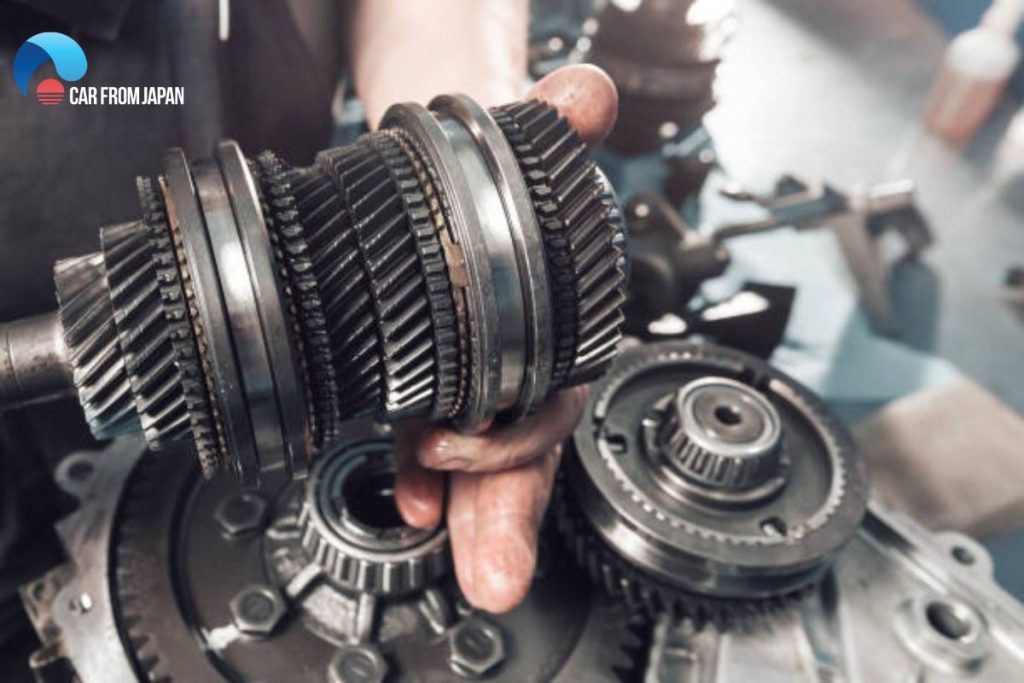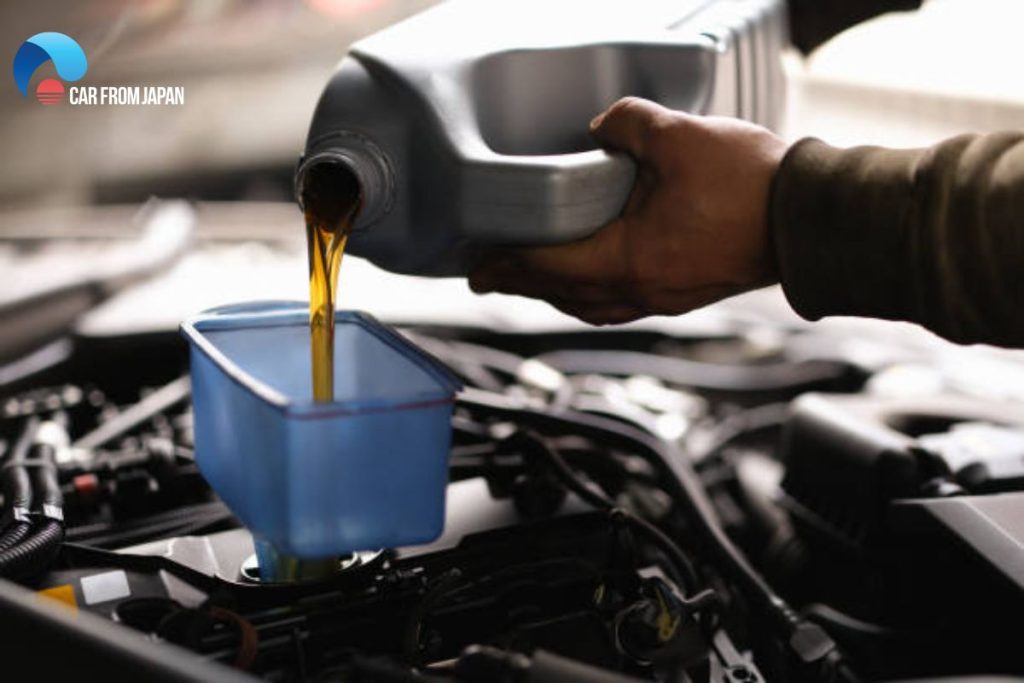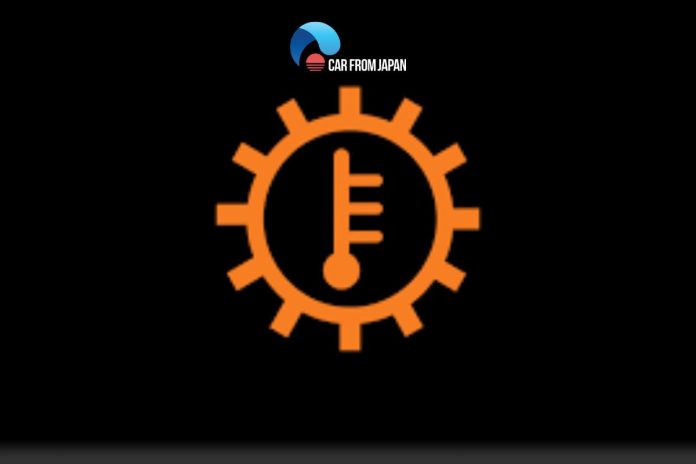That sudden glow of a new warning light on your dashboard can be a real moment of panic. If it’s the transmission temperature light, you’re probably wondering exactly what it means and, more importantly, is it’s safe to drive with the transmission temperature light on. This isn’t a light to ignore, as your transmission is a vital and complex part of your car. Continuing to drive could lead to serious issues, so let’s explore the risks.
Contents
Is It Safe to Drive When the Transmission Temperature Light Is On?
So, what does the transmission temperature warning light mean? It means that your transmission is overheating. Is it dangerous? Yes. The heat, more than anything else, is the reason for the failure of transmission.
The normal transmission temperature is between 175 and 225 degrees Celsius. It is in a super healthy condition when it operates at or below 175°C.
Remember that for every 20 degrees past 225 degrees, you will get half the normal life out of your gearbox. Similarly, every 20-degree drop in temperature is likely to double its life.
When the light is on, it indicates that the fluid temperature has reached at least 250 degrees. At this point, the fluid starts breaking down, reducing the lifespan of the gearbox as a result.
If you continue driving, the temperature will keep rising. It will be a disastrous situation if it crosses 270 degrees. The fluid will completely break down at this stage, and the transmission will stop functioning.
So, continuing to drive with the transmission temperature light on can lead to an accident because of the car’s breakdown and an expensive repair job.

Why Does The Transmission Temperature Light Is On?
Transmission fluid shortage
Lacking transmission fluid is one of the reasons your transmission temperature lights up. Remedying this issue can be topping off the suitable fluid and determining where the leaks are.
High transmission temperatures
In the case of transmission overheating, most cars will also instantly display a transmission warning light.
In this case, it is critical to examine the overall amount and quality of your vehicle’s transmission fluid and replace it according to the manufacturer’s maintenance plan.
Diagnostic codes saved
In many circumstances, if a transmission-specific failure code is saved, the vehicle’s transmission warning light will illuminate. Internal transmission failures to basic electrical difficulties within the valve body might all be the cause of such codes.
Your car need maintenance
Under some conditions, the activation of a transmission light on car may not be symptomatic of a problem at all. On the contrary, some cars use a similar light to warn that routine transmission-specific maintenance is required.
What To Do When The Transmission Temperature Warning Light Comes On?
If your transmission temperature warning light comes on, the first and most important thing to do is find a safe place to pull over as soon as possible. Reduce your speed and avoid hard acceleration while you look for a spot.
Once stopped, turn off the engine to allow the transmission to cool down. This can take at least 30 minutes, often longer, depending on how hot it gets and the ambient temperature. When it’s cooled significantly, and if you feel comfortable doing so, you can check the transmission fluid level (refer to your owner’s manual for the correct procedure) – low fluid is a common cause of overheating.
Driving further with the light on, even if it goes off after cooling, is risky as it can cause severe and expensive damage. The best course of action is to have your vehicle towed to a qualified mechanic. They can diagnose why it overheated and perform the necessary repairs.

How to Find Out If the Transmission Is Overheating?
Watching out for the transmission temperature light to turn on! But there are a couple more ways to do it. A hot transmission emits a kind of sweet odor. Sometimes, the warning light may not come on, but if you sniff something out of the ordinary, stop the car.
Start the journey after some time when you think that the fluid temperature has returned to normal.
Another way to find out the problem is to check the transmission fluid. Unlike engine oil, it does not get burned up while driving the car.
So, a low fluid level is an indication of some trouble. If you find it black or darker than the normal color, it’s a surefire way to tell that the transmission is overheating.
FAQs on Transmission Temperature Light On
Is it possible to drive with a heated transmission?
Overheating transmissions is a big problem. If this occurs, you should get your transmission system examined as quickly as possible. Driving with a gearbox that is too hot can be quite dangerous, and it may even prevent you from driving at all.
How can I reduce the temperature of my transmission?
From time to time, switching to neutral allowing your car to idle in neutral in heavy traffic, on railroad lines, or while stopped at a red light, reduces the pressure on the gearbox. This is your chance to reduce the intensity of your transmission by cooling it down.
What is an acceptable transmission temperature?
Keep the temperature of your gearbox between 160 and 220 degrees to keep it safe. Some transmissions can maintain a safe normal transmission temperature at temperatures somewhat over that range.
Is coolant used to keep the transmission cool?
During typical driving, the gearbox, like the engine, becomes heated. The fluid is sent through a cooler within the radiator to cool the gearbox.
When the engine cooling system is operating correctly, the engine coolant flows through the radiator and over the gearbox cooler.
How long can I drive with the temperature gauge turned on?
Typically, this light offers you at least a hint of a significant problem. Keep an eye on the light for the next mile or so, and if it doesn’t turn off by then, pull over and switch off the engine.
The Final Words
It’s vital to find out the transmission problems at an early stage to avoid bigger malfunctions and expensive repair jobs down the road. So, you have to watch out for the transmission temperature light and other symptoms to keep your car up and running.




you have Celsius and Fahrenheit mixed up